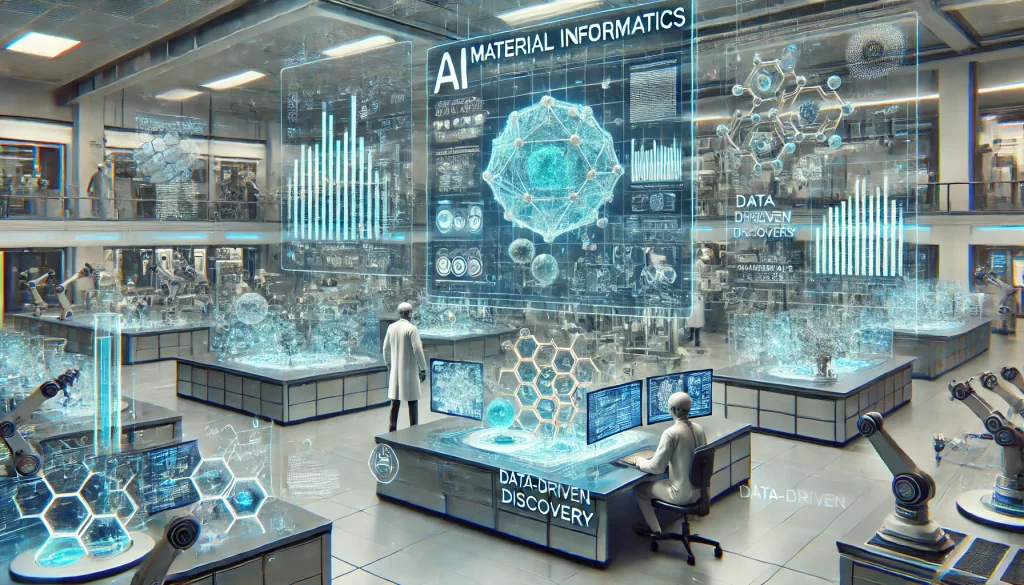The field of material informatics leverages artificial intelligence to accelerate the discovery, design, and optimization of new materials. Traditionally, materials development has relied heavily on experimental testing, taking years to progress from concept to application. With AI and machine learning, material informatics is transforming this process by analyzing vast datasets, identifying patterns, and predicting material properties, offering a more efficient, data-driven approach to innovation in fields such as energy storage, electronics, healthcare, and sustainable materials.

AI’s Role in Material Informatics
AI techniques, particularly machine learning algorithms, enable the rapid analysis of material properties based on chemical composition, structural characteristics, and historical performance data. Through predictive modeling, AI can forecast how a material might behave under various conditions, effectively narrowing down promising candidates for experimental testing. These tools also enable virtual simulations, providing a cost-effective, faster alternative to lab experiments. For instance, in the battery industry, AI helps predict optimal materials for energy density, safety, and longevity, crucial for advancements in electric vehicles and renewable energy storage.
Data-Driven Discovery
A significant challenge in material informatics is data management. AI can process and learn from extensive datasets collected from literature, research papers, and proprietary experiments, identifying correlations that might go unnoticed in traditional approaches. For example, deep learning models can handle the complexity of high-dimensional material data, allowing scientists to predict which molecular structures are most likely to achieve desired properties, whether for pharmaceutical compounds, catalysts, or biodegradable plastics.
Application Across Industries
Material informatics has broad applications, influencing industries from electronics to pharmaceuticals. For electronics, AI-driven material informatics accelerates the development of high-performance semiconductors and superconductors essential for advancing computing technology. In healthcare, it aids in discovering biocompatible materials for medical implants and drug delivery systems, while in energy, it supports the discovery of efficient photovoltaic materials for solar panels, helping to meet the rising demand for sustainable energy sources.
Addressing Sustainability
The drive for sustainability adds urgency to material discovery. AI material informatics aids in developing eco-friendly materials, such as biodegradable plastics, recyclable alloys, and high-efficiency catalysts for chemical processes that reduce emissions. AI also optimizes manufacturing processes by predicting how materials behave during production, thus reducing waste and energy consumption.
Future Prospects and Challenges
As AI in material informatics continues to evolve, we can expect even more significant breakthroughs. Quantum computing is likely to further enhance AI capabilities, especially in handling complex molecular simulations. However, challenges remain, including data quality, accessibility, and the need for interdisciplinary collaboration between material scientists and AI experts. There’s also a pressing need to standardize data formats across research institutions to facilitate broader collaboration and innovation.
The integration of AI in material informatics represents a transformative approach to material science, accelerating innovation across sectors and enabling the discovery of materials tailored to modern technological and environmental demands. As AI technology matures, its potential in this field will continue to grow, paving the way for faster, more sustainable development in materials that underpin our everyday lives.
